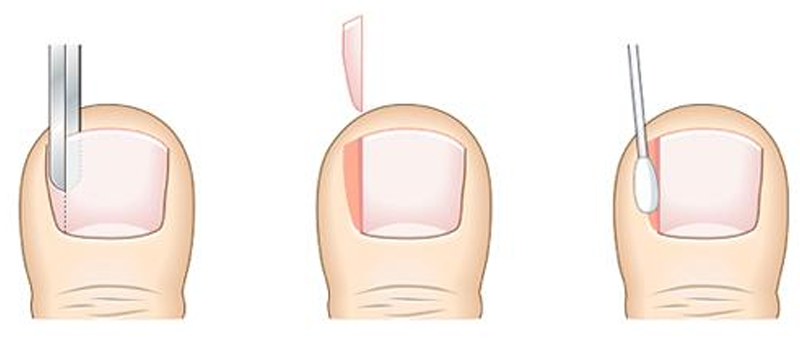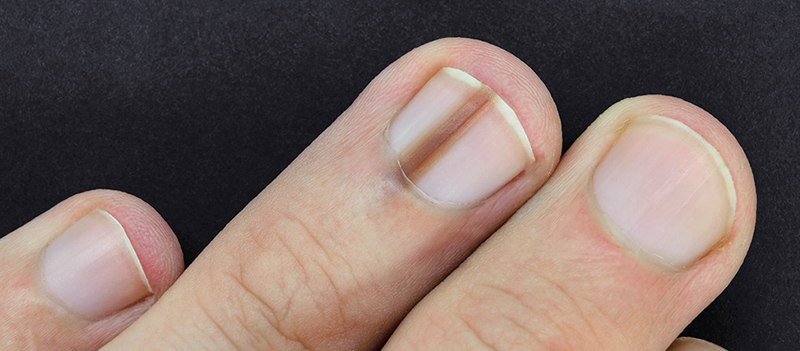Medical Treatments
Nail Infection

Nail fungus is a common infection of the nail. It begins as a white or yellow-brown spot under the tip of your fingernail or toenail. As the fungal infection goes deeper, the nail may discolor, thicken and crumble at the edge. Nail fungus can affect several nails.
If your condition is mild and not bothering you, you may not need treatment. If your nail fungus is painful and has caused thickened nails, self-care steps and medications may help. But even if treatment is successful, nail fungus often comes back.
Nail fungus is also called onychomycosis (on-ih-koh-my-KOH-sis). When fungus infects the areas between your toes and the skin of your feet, it's called athlete's foot (tinea pedis).
Symptoms
Symptoms of nail fungus include a nail or nails that are:
- Thickened
- Discolored
- Brittle, crumbly or ragged
- Misshapen
- Separated from the nail bed
- Smelly
Nail Removal

Nail removal, as the term implies, is a procedure that involves removing the nails (either surgically or non-surgically) as a form of treatment following a severe infection or traumatic injury. Since the nails protect the fingertips and are considered as a valuable part of the peripheral circulation, they rarely need to be removed. However, nail removal is performed when the damage is causing severe complications and if it is the only option to fix the problem.
Nail removal can be performed using surgical or non-surgical method. The latter is highly preferred by both surgeons and patients primarily because it is painless. It is performed to remove the damaged or diseased nail while making sure that unaffected parts remain unharmed. Meanwhile, the former is typically performed under local anaesthesia. In other cases, general anaesthesia is administered depending on the preference of the patient and the recommendation of the doctor. There is also a possibility that procedural sedation may be used, but it is not typically suggested.
Nail Biopsy

A nail biopsy is performed to diagnose clinically ambiguous nail lesions or dystrophies or to remove tumors [1]. Because of the propensity for scarring and inadequate sampling, nail biopsies are best performed by clinicians with appropriate training and experience.
How painful is a nail biopsy?
Most patients report throbbing pain in the first one to two days after the biopsy. This pain will decrease within a week. After the first week, the digit will still be tender to the touch. You may still have numbness and/or tingling at the biopsy site after a few weeks.
Consult your doctor for the same.
